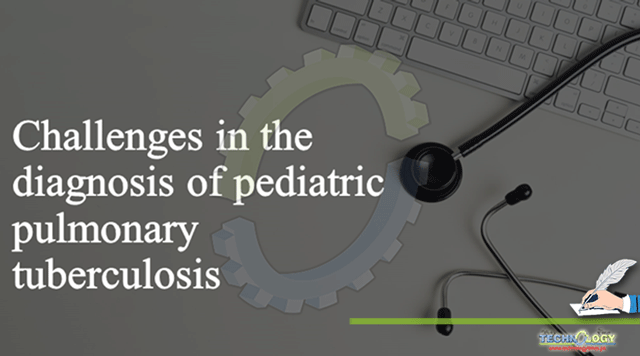Tuberculosis (TB), one of the world’s deadliest infections, is caused by bacterium (Mycobacterium tuberculosis). It usually damages the lungs, but this microorganism can also attack other organs like brain, kidneys and lymph nodes.

By Ayesha Afzal, Shamsa Kanwal, Mawra Iqbal
Introduction:
Tuberculosis is frequently causing disease particularly in children where it has high mortality rate. There are approximately 70% chances of getting TB infection as a result of exposure to someone having contagious pulmonary tuberculosis.
Can children with TB spread infection
According to the estimates of World Health Organization (WHO) there are almost 8.7 million new cases every year out of which 0.5 million are children. In most cases children get infected as a result of contact with someone having contagious pulmonary disease. In general, TB in children is not contagious, so fortunately they do not spread infection and with proper treatment TB is preventable as bacterial load of disease is sufficiently low in young children.
Prevalence and transmission of pediatric pulmonary tuberculosis
The tuberculosis infection in children can be the result of;
- Inhaling in the contaminated environment, the one that droplets of an infected person.
- The bacterium spreads through the air, when a person with contagious TB coughs, sneezes or speaks in the shared environment. In this way a child may get exposed to that bacterium.
- Children rarely or do not spread infection as in most of the cases infection in children is not contagious but unfortunately, they become infected from the exposure of an adult having contagious infection.
Signs and Symptoms:
- Symptoms of primary infection of tuberculosis in children are common with other common diseases that make it difficult to diagnose the infection at early stages.
- The most common symptoms of pediatric TB include fever, cough, weight loss, and chills, night sweats etc.
- Common signs and symptoms of pulmonary tuberculosis in children
Diagnosis:
Diagnosis of TB refers to the recognition of an active TB disease, i.e., a patient with disease caused due to Mycobacterium tuberculosis.
The diagnosis of pediatric pulmonary tuberculosis is found to be challenging as in most cases children do not have active disease and signs and symptoms even the radiological features resemble the other pulmonary disease .
The specificity of symptoms in order to diagnose infection depends on how strict the definitions of the symptoms are. However, the duration of symptoms is also considered while diagnosing the primary infection. Children with high risk of infection have some specific symptoms like if there is fever or cough, then it is necessary to know that for how many weeks a child is suffering from fever or cough.
The diagnosis of TB in children highly depends on assessment of all the evidence derived from a careful history of exposure, clinical examination and relevant investigations.
- That’s why thoroughly investigating the child’s history about exposure or contact with someone having TB or if there is someone in the family is necessary in order to know possible TB exposure and to perform a proper symptom characterization. About 50% of children are asymptomatic and are diagnosed as a result of contact investigation.
- In addition to asking about weight loss or failure to thrive, going through the child’s growth chart if available can also help in the proper diagnoses.
Treatment:
Pulmonary Tuberculosis is curable and about 85% of people who develop TB disease can be successfully treated with a 6-month drug treatment. The highest mortality rates are in children under age 5. The TB infection in children is treated by;
- Case-finding:
That is followed by chemotherapy, it is highly effective for the control of the disease. Even though children with tuberculosis (TB) are not a risk to the community, they need to be treated. Proper treatment is necessary in order to control the disease.
- The anti-TB drugs:
(isoniazid, rifampicin, ethambutol, pyrazinamide, streptomycin, and thioacetazone) must be prescribed in a proper combination and in the right dosage, and they must be taken regularly for a sufficient period of time.
Prevention and control:
Tuberculosis is preventable, and this prevention takes place through following three steps;
- By identifying the sources of infection, i.e., adults with pulmonary TB and by giving proper treatment.
- BCG vaccination is given to newborn to prevent primary infection and its complications. Since people with active disease or adults having contagious TB are more likely to spread disease, the major ways to prevent the spread of TB to other people and to children are by identifying people with active disease (i.e., case finding) and;
- By giving effective treatment.
Tuberculosis (TB) in children needs more attention in order to prevent infection and to prevent transmission to other patients and health care workers. Although many children with TB do not have active or contagious disease so the rate transmission of infection is low in this case, appropriate airborne precautions must be maintained until conditions that increase the risk of transmission have been ruled out and accompanying adults, who may also be infectious, have been screened. Some strategies in order to prevent the transmission of the TB can be used including;
- By adopting personal protective measures, the personal protective measures may include the use of mask.
- Pulmonary tuberculosis in children is a serious issue regardless of it that it is not very common but it is challenging to diagnose it properly at its early stages , there are many reasons of its transmission like mostly seen is the contact with someone having active disease , so it should be diagnosed properly regardless of this point that it is not common , if the symptoms that seems common of other diseases prolonged than few weeks see your physician and tell him properly about your symptoms and other health issues and start your treatment as soon as possible after the confirmation of disease.
Reference:
- https://www.ncbi.nlm.nih.gov/books/NBK214442/
- https://pubmed.ncbi.nlm.nih.gov/21554228/